The radiator or in the common people "battery" has long been densely integrated into our life. This is especially true in regions where the temperature in the room drops below 18 degrees Celsius. Apartment, country house or office simply can not survive without a heating appliance. It is designed to dissipate heat and it is installed immediately after finishing the room. It radiator warms the walls, floors, air for a comfortable existence. It must be installed according to all the rules and regulations of the management company. What are the types and rules for the replacement of radiators we learn from the article below.
Content
Types of radiators
Before you start buying a battery, you need to know what kinds of radiators there are. First of all, we should focus on the quality of the material. It is he who is responsible for the thermal conductivity, aesthetics and durability of the heater.
- Cast iron. This material at the radiators found its history back in Soviet times. Everyone knows the cumbersome cast-iron batteries that everyone hid behind the curtains, so that they do not spoil the design picture. But despite this minus, this type of battery has a lot of positive sides. They qualitatively warm up the premises and can serve more than a dozen years. And they can be disguised as a screen for heating batteries.
The price of cast-iron radiators keeps in the average price range, if you do not take into account modern design developments that homeowners try not to hide, but skillfully fit into the interior. Therefore, many apartment dwellers choose cast iron. They are checked by time and quality of heat transfer;

- Aluminum. Aluminum radiator is one of the most budgetary options. Basically, such a heating device is chosen for installation in private homes, but apartment construction should not be moved to the last place. The fact is that this type of battery is suitable for residential premises with low pressure surges. In addition, aluminum does not like chemical reactions with hydrogen, it is important to monitor the pH level. Distinguish cast aluminum radiators and extrusive. Both those and other batteries are characterized by high heat dissipation. They heat up quickly, have a wide variety of varieties and have a light weight;
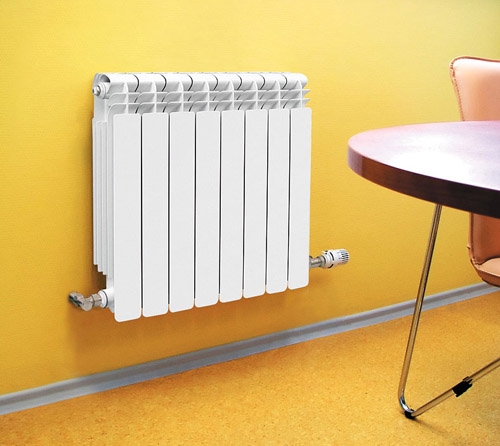
- Biometall Is a material that includes an alloy of two metals. Biometallic radiators are quickly put into operation thanks to the aluminum housing and the steel core. Due to the presence of a high-strength rod, biometallic radiators are insensitive to hydraulic shocks, which increases the service life of the heating device. They heat up quickly and dissipate heat, but the cost of biometal radiators is high;
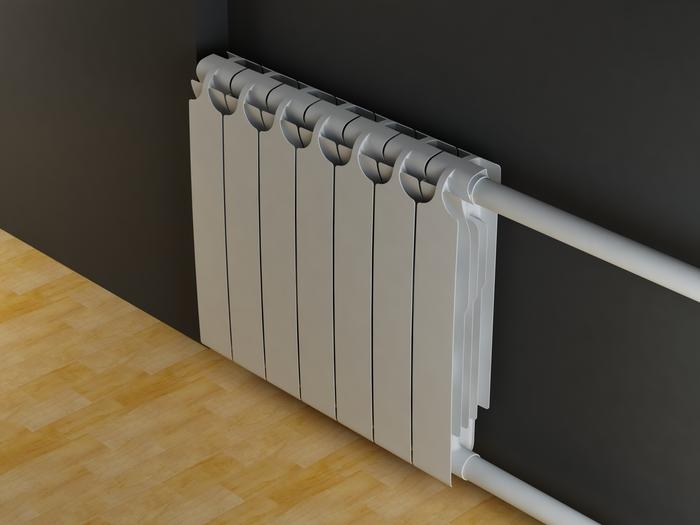
- Steel. A durable material that does not get raised by water pressure, but steel appliances are susceptible to corrosion, which arises from the reaction of steel with impurities present in the water. The life of such radiators is 15-20 years. They have a modern design and light weight. In addition to all, steel batteries quickly heat up and immediately begin to warm up the room. The cost of steel batteries is currently kept at an affordable level;
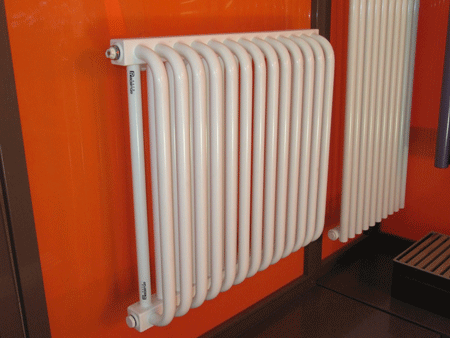
- Copper. Copper heating radiators - are rightly considered elite heating appliances. They are completely non-corrosive, and after 3-4 days of operation, an internal oxide-protective layer is formed at the radiators, which further protects the batteries from the effects of various impurities from the water.
After connecting the radiator, the heater almost immediately starts warming up the room (after about 3 minutes). Its heat transfer rate is much higher than that of aluminum and cast iron. This is explained by the manufacture of an all-metal pipe through which the same metal ribs pass, framed by a back wall made of wood. In addition to thoroughbred copper radiators, there are copper-aluminum batteries, which practically do not differ in the quality of heat transfer.
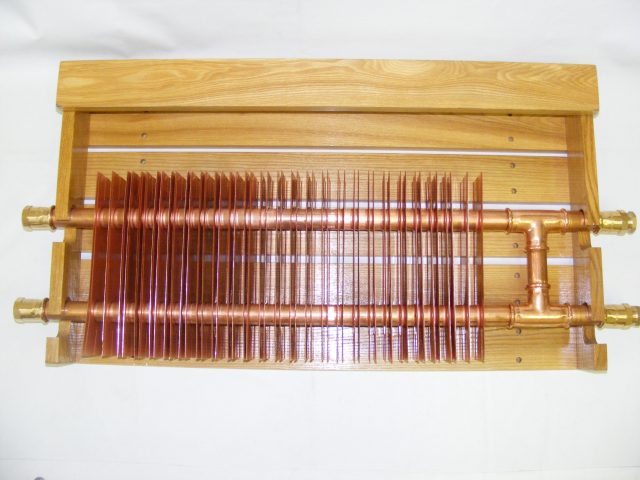
How to choose a radiator
When choosing a radiator, first of all, in the calculation it is necessary to take the area of the room intended for warm-up. The technical characteristics of the battery always indicate the power of the 1 section, which is intended for heating a certain number of square meters. So, for example, for a standard room of 15 m2, a radiator with a power of 140 kW is suitable.

In addition to the heat transfer factor, it is necessary to take into account the load of the batteries. For a residential installation, you should choose the type of battery that will withstand the shock of water hammering. An important role is played by the design of radiators. If in a spacious house you can hide a battery under curtains or furniture, then in a small apartment radiators are usually in sight. Especially for this, modern manufacturers have developed many shapes and colors of heating radiators. Now consumers can install a battery of red or black color with engraved drawings. At what, the length and width of the radiator can be very different from three sections and up to the maximum permissible rate or to the ceiling itself in height.
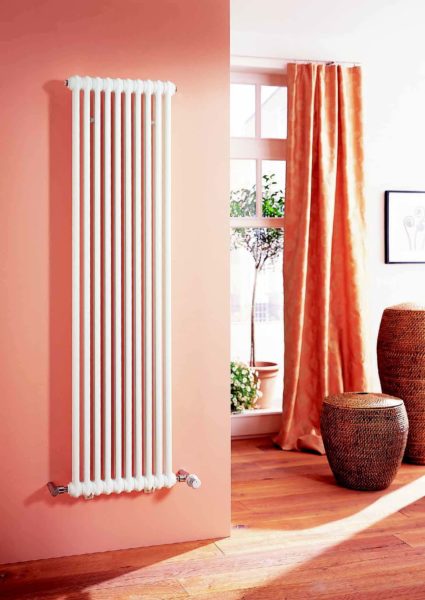
Replacing the radiator
The heating radiator is replaced by a plumber. Before you hire a master to install the battery, it is worth making sure of the expertise of the specialist. This will determine the quality of the radiator installation and its service life. The entire cycle of work is done using a welding or pressing machine. The type of work will depend on which type of pipe is suitable for the battery and the quality material of the radiator itself.

As a rule, the plumbing team makes replacement of batteries for 2-3 hours. If it concerns the dismantling of 3-4 batteries that make up the heating system of the whole house or apartment, then the work can take all day. In other words, the inconveniences will last no more than a day, but the room will be fully heated.
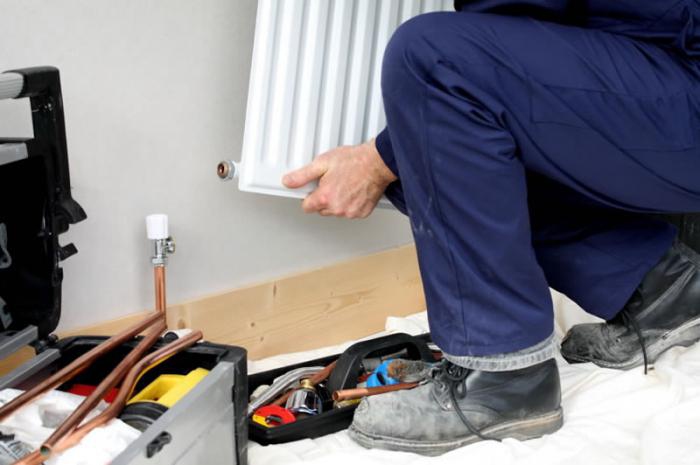
There are several schemes for connecting radiators. All of them depend on the battery material, the system of suitable pipes, and of course certain features of the interior of the office, apartment or private house.
- Side connection;
- Diagonal connection;
- Lower connection.
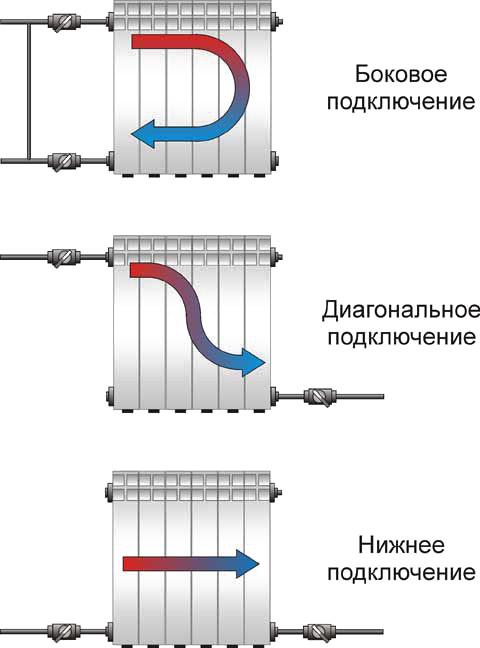
how the radiators are replaced according to the law
Replacement of radiators is made for a variety of reasons. Nevertheless, it is necessary to comply with the rules for installing heating appliances, which do not contradict the legislation of the Russian Federation. This is especially true for tenants of apartment buildings, where the batteries were originally installed by the housing office. First of all, the tenant of an apartment building should know that even a proprietor (a privatized apartment) does not have everything as personal property. This also applies to tenants whose apartments are in social employment. Here, the rights of both residents are determined by the law on the rules for the maintenance of common property in an apartment building approved by the Government of the Russian Federation on August 13, 2006 under No. 491. Attention should be paid to clause 6 of this provision: "Intra-house heating system consisting of risers, heating elements, control and shut-off valves, collective (common house) heat metering devices, as well as other equipment located on these networks ".

From the rule №491 item 6 it follows that the batteries installed by the housing office are the property of the HOA. But here there is a small caveat, if your radiator does not have a jumper, then the battery can be dismantled for free and replaced by employees of the housing and communal company. If it has a faucet with a bypass, then the battery is now in your charge and in case of a leak, you will install it at your own expense.
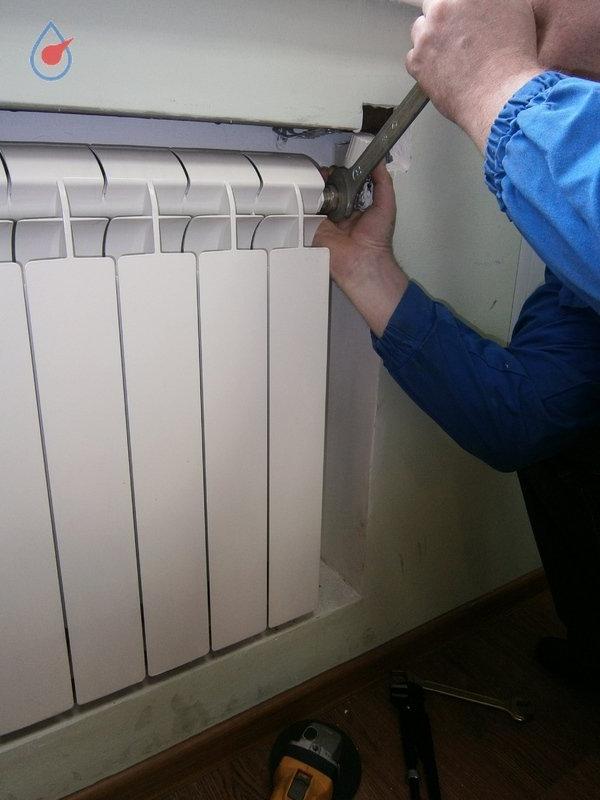
If the replacement of the radiator falls under the first case, then everything is simple. You write an application to the management company or leave the application to the dispatcher and wait for the free plumbing works. In the second case, the plumber is also called by phone or through an application to the relevant organization and is paid according to the available tariffs.
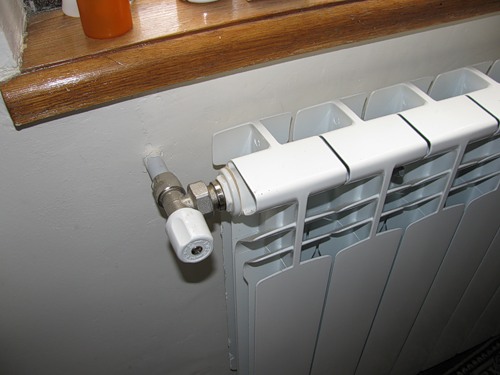
Who has the right to perform work on the replacement of radiators in the apartment
As soon as you decide to replace the radiators, immediately the question will arise: "where can I go to replace the radiators?". The first and no-lose option is the replacement of batteries by the operating company to which your apartment building belongs. They are engaged in the dismantling, installation, subsequent launch of heating and pipe testing. Both owners and employers can use the service of the housing office in full. Only one will have to pay the company's tariffs, while others can use the service for free.
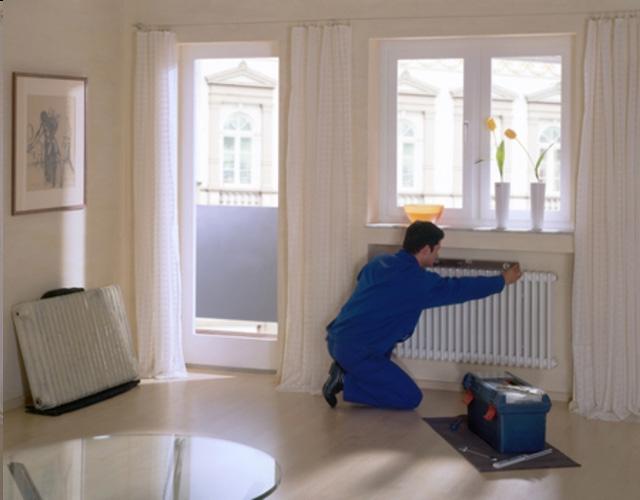
In addition to the service organization, you can contact a private company that does the plumbing work. In any case, the service of this company will be paid, not always the company's services are cheaper than the operating company. Another disadvantage of private firms is the lack of awareness in the adjacent pipeline junctions. In other words, when it comes to crimping, you will need to run a water flow. This is done in the basement of an apartment building, and employees of hired firms often do not know where the valve is to start the system.
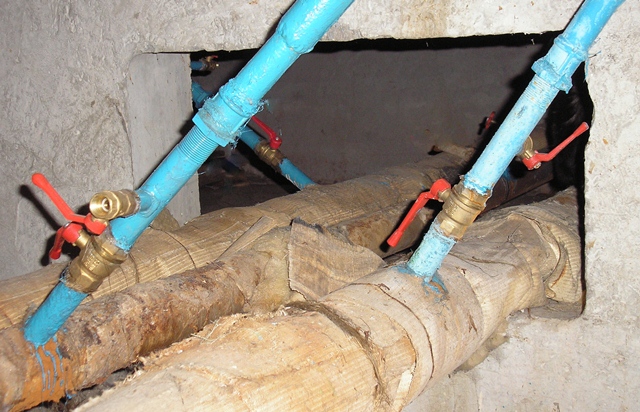
Some tenants, not wanting to overpay for installing a radiator, are engaged in self-installation. If the apartment is not privatized, it is strictly prohibited. For such actions, at least, there is a penalty. Owners can take advantage of the free option, however, it is recommended for true professionals to believe in oneself. Few people surmise about the consequences of an incorrect heating balance. Harm from this will not only be in your apartment, but also with neighbors who live on the lower floors.

MC, her participation in the work on the replacement of radiators
Regardless of who will change the radiators, the management company should be aware of the current changes. If you own the apartment and rely on the forces of a private organization, then you will need to go to the housing office, write an application and get permission from the management company. A verbal permission is not enough. It will be better if you get a visa from the head of the Criminal Code or his written consent.

In addition, you can use paid services HOA. Then they will give you not only permission, but also a team of specialists in the installation of radiators. In the case of major repairs of the house and for apartments with social hiring, the CM also provides free qualified services.
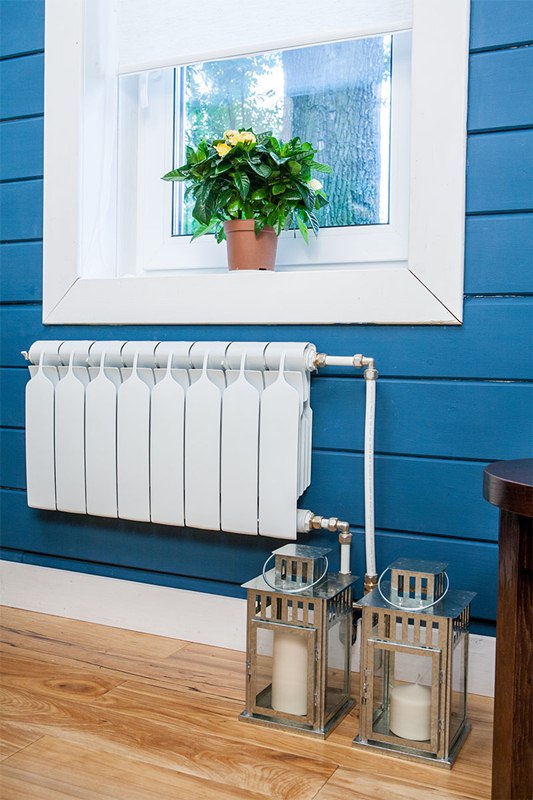
Replacement of radiators in the apartment price
In the case of a paid replacement radiator tenants are always interested in the price. According to some statements in private organizations, prices are higher than those of the operating company. But this is not always the case, the conclusion here is one - look for the organizations that have been verified, which will perform their work qualitatively. In addition, keep in mind that for different regions their tariffs for plumbing work are established.
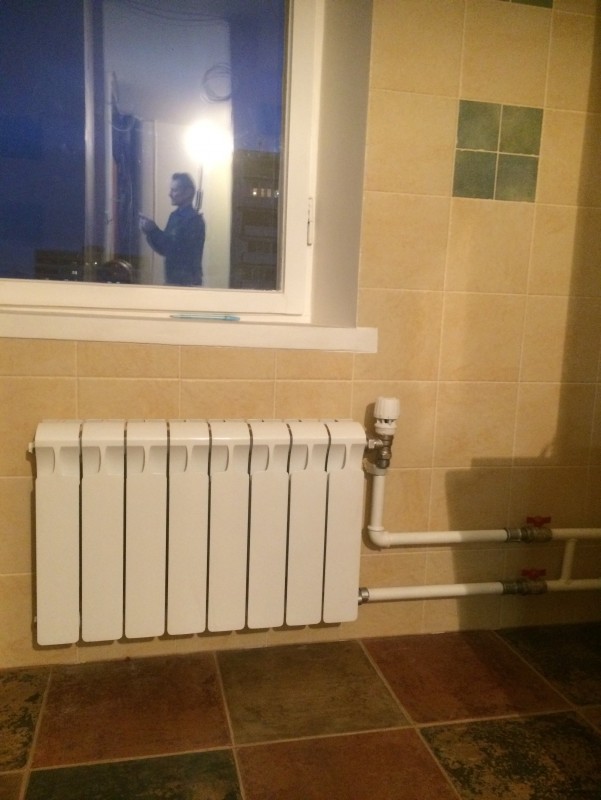
What is included in the cost of replacing the radiator? First of all, this is the dismantling of the old battery. Some companies make a gift - a free radiator. After that, the battery kit is assembled: a set of fixtures, ball valves, pipes and fittings is selected. According to various sources, all together will cost about 3,500 rubles. Then the heater is installed and connected. Worth this service somewhere in 2 500 rubles. As a rule, the radiator is bought by the owner. Its price depends on how many sections the heating device will have, what material was used for its manufacture and, of course, the manufacturer has an important role.
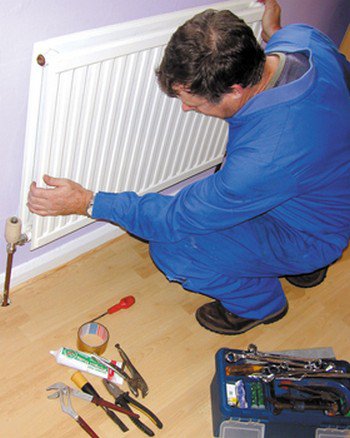
Helpful Tips
- The replacement of the radiator must be made in the off-season. That is, at a time when there is no heating season. This will protect all tenants and keep the heat in the winter;
- Before buying a radiator, calculate the sections required to heat the area of the room. Do not take too many sections "in stock", this will lead to an imbalance in the heating system. Residents of upper floors will not be able to receive the necessary rate of heat;
- When choosing batteries, consider what material is suitable for your heating zone. Some radiators can not withstand large water hammers;
- When choosing a company to replace batteries, pay attention to one that has a certificate for plumbing;
- All work on the replacement of radiators must be complied with in accordance with SNiP 41-01-2003 "Heating, ventilation and air conditioning";
- In order to be able to independently control the heat level, purchase a thermostat.



















